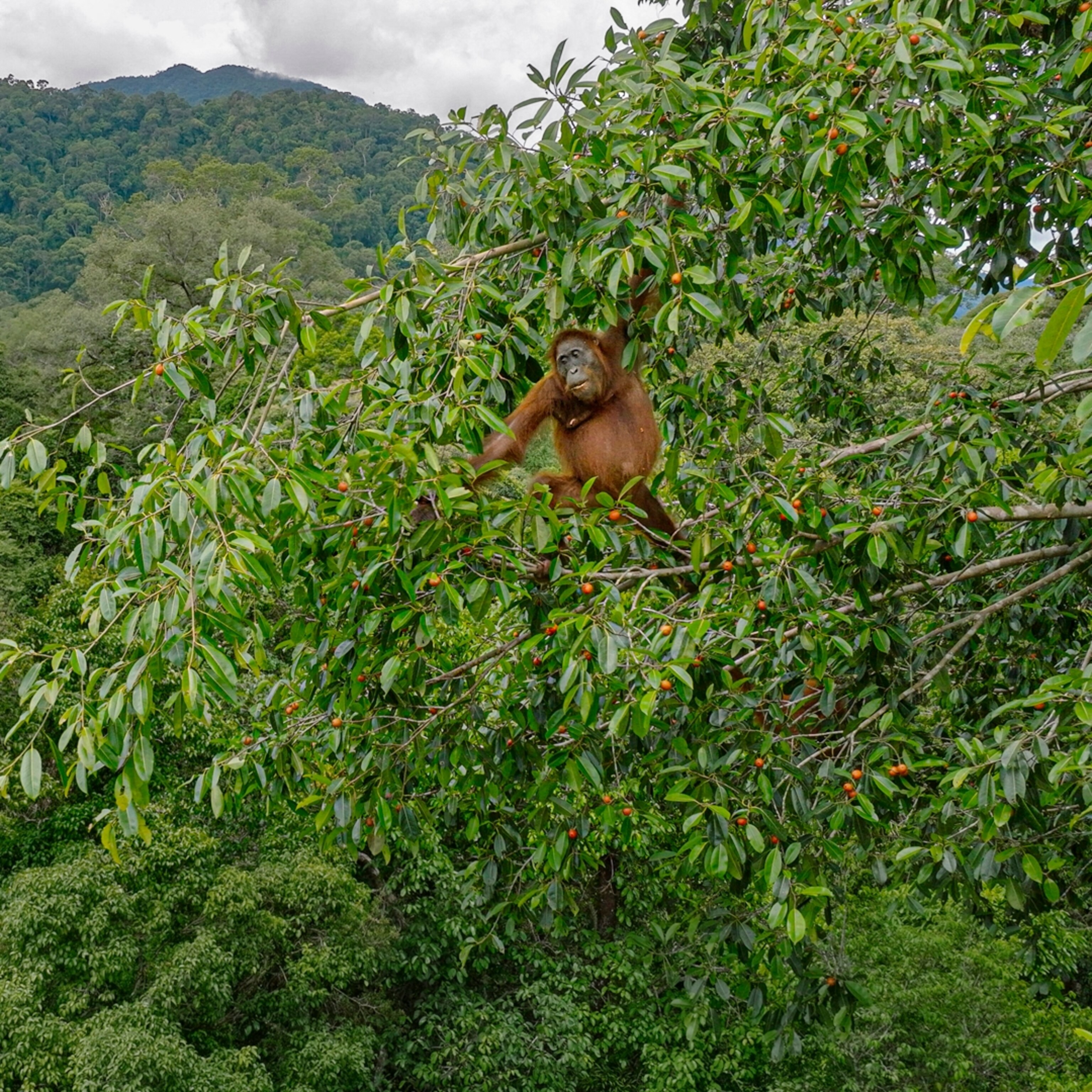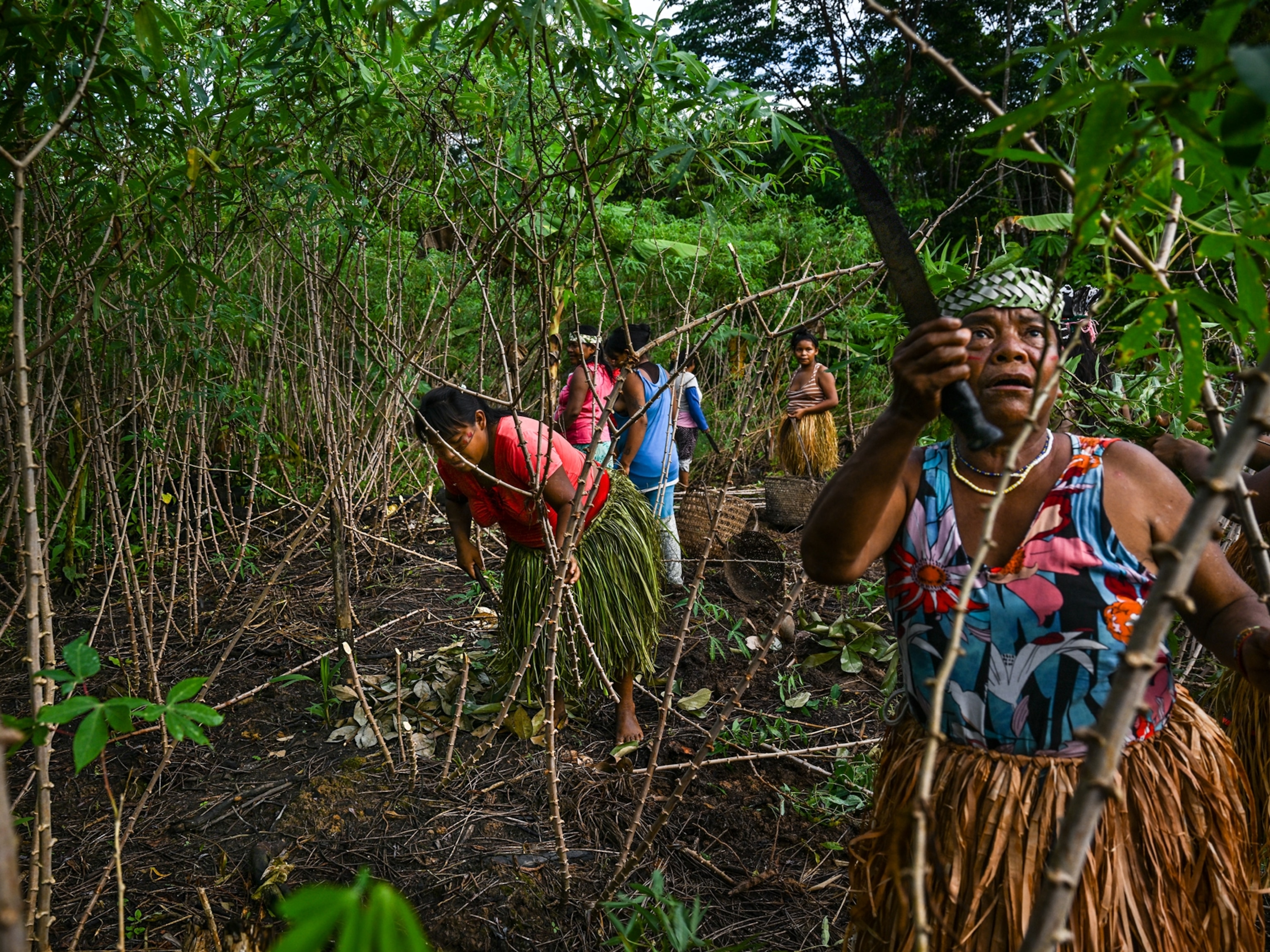
Cocaine to Blame for Rain Forest Loss, Study Says
Coca planting linked to deforestation in biodiversity hot spot.
Cocaine is destroying lives and tearing homes apart—and not simply because of drug use. Farming coca, the plant used to make cocaine, has been linked to rising deforestation rates in Colombian rain forests, a new study says.
What's more, ecologist Liliana M. Dávalos and colleagues have for the first time quantified indirect deforestation tied to coca farming, such as clearing land for growing food crops near coca plantations.
"In southern Colombia we found geographically that there is just more probability of losing the forest close to [coca cultivation]," said Dávalos, of the State University of New York in Stony Brook.
"And the more coca around you, the more forest you're likely to lose—the sheer amount of coca in the vicinity has an effect."
(Related: "Cocaine, Spices, Hormones Found in Drinking Water.")
That means coca cultivation is taking a heavy toll on plant and animal species in one of the world's richest biodiversity hot spots. Colombia's forests are home to many animals—including harpy eagles, tapirs, golden poison frogs, and spectacled bears—that are at risk of extinction. (See pictures: "Ten Most Threatened Forest Hot Spots Named.")
The findings spotlight a need for increased legal protections for Colombia's forests, from the Andes to the Amazon, the authors say. While national parks and other protected designations don't entirely eliminate illegal drug activity, Dávalos and colleagues found that such measures do reduce it substantially.
People Following Coca Into Forests
Leaves from the coca plant actually hold very small amounts of the chemical needed to make cocaine.
Andean peoples have chewed coca leaves for centuries to induce a mild stimulant effect, and they also use the plants to make products such as tea and baking flour. But global cocaine use has created demand for enormous quantities of the plant.
The new study, published January 11 in the journal Environmental Science & Technology, charted the pace of Colombian deforestation from 2002 to 2007 using satellite land-cover maps created specifically to monitor illicit crop growth.
Coca plants appear bright green in these pictures, standing out against darker vegetation. The team also used aerial photos from follow-up flights in their analysis.
(Related: "Cocaine Submarine Pictures: New Seizure Shows Advances.")
Only a small part of the demonstrated deforestation is driven by clearing land to plant coca bushes, the study found. When remote areas attract growers of illegal coca, they become economic hubs for lots of associated agricultural activities.
Though many of these activities are perfectly legal, such as planting food crops, they're driving unregulated deforestation in many ecologically sensitive areas, Dávalos said.
Dávalos cautioned that the indirect effects weren't seen everywhere in Colombia. Also, the mechanism linking coca to deforestation is a bit more complex than simple math suggesting more coca equals more people, which equals deforestation.
"The conclusion is that the places where new coca plantations are happening have coca because they are underdeveloped economically," she said. In other words, the drive to plant coca farms in remote, isolated areas is leading to deforestation in pristine regions that might otherwise be left alone.
Possible solutions to the problem are likely to be complex, but the study suggests that boosting the land's protection status is a simple and effective place to start.
"It's not a situation where we find no deforestation in national parks. But protection does slow down deforestation," Dávalos said. "When we look at two places with exactly the same characteristics, one a park and the other not, the one that's not protected will be significantly more deforested in a given period of time."
Cocaine Not a Green Product
There's some possible good news for Colombian rain forests, said Rafael Lemaitre of the U.S. Office of National Drug Control Policy (ONDCP).
ONDCP statistics suggest that Colombia's potential production capacity for pure cocaine—i.e., the amount of land for coca farming—dropped to 270 metric tons in 2009. This figure follows a trend of decline from an estimated 700 metric tons in 2001.
Because historic mapping data is lacking, no one knows what the rates of forest decline might have been during the boom years, when Colombian coca production exploded from just 10 percent of the world's total in 1987 to a peak of 74 percent in 2000.
Study co-author Dávalos added that the total sum of known Colombian acreage dedicated to coca declined during the study years, as plots were destroyed or abandoned. But significant numbers of new plots continued to pop up each year, which kept related deforestation on the rise.
Production declines may correspond to decreased demand in the U.S.—some 95 percent of U.S. cocaine originates in Colombia. The 2009 National Survey on Drug Use & Health—the U.S.'s largest—shows the number of current coke users age 12 and over dropped about 20 percent from 2007 to 2009.
(Related: "Cocaine on Money—Drug Found on 90 Percent of U.S. Bills.")
"Both the cultivation and the production of cocaine have dropped dramatically," Lemaitre said. "That's the good news. The bad news is that, where this stuff is produced and cultivated, there are serious environmental consequences."
Coca growers use plenty of pesticides, many of which are technically banned in Colombia, he said.
"Production itself is also located in pristine areas, where the Colombian biodiversity is incredible, and it relies heavily on toxic chemicals. What's left over is dumped into the ground or into the river systems of rural Colombia." (See rain forest-wildlife pictures.)
Still, Dávalos and colleagues say their research has made at least one thing quite clear: "There's a long chain here connecting everything," she said, "and it goes from consumption all the way back to the forest."
Related Topics
You May Also Like
Go Further
Animals
- Behind the scenes at America’s biggest birding festivalBehind the scenes at America’s biggest birding festival
- How scientists are piecing together a sperm whale ‘alphabet’How scientists are piecing together a sperm whale ‘alphabet’
- Orangutan seen using plants to heal wound for first timeOrangutan seen using plants to heal wound for first time
- What La Palma's 'lava tubes' tell us about life on other planetsWhat La Palma's 'lava tubes' tell us about life on other planets
Environment
- The northernmost flower living at the top of the worldThe northernmost flower living at the top of the world
- This beautiful floating flower is wreaking havoc on NigeriaThis beautiful floating flower is wreaking havoc on Nigeria
- What the Aral Sea might teach us about life after disasterWhat the Aral Sea might teach us about life after disaster
- What La Palma's 'lava tubes' tell us about life on other planetsWhat La Palma's 'lava tubes' tell us about life on other planets
- How fungi form ‘fairy rings’ and inspire superstitionsHow fungi form ‘fairy rings’ and inspire superstitions
History & Culture
- This thriving society vanished into thin air. What happened?This thriving society vanished into thin air. What happened?
- These were the real rules of courtship in the ‘Bridgerton’ eraThese were the real rules of courtship in the ‘Bridgerton’ era
- A short history of the Met Gala and its iconic looksA short history of the Met Gala and its iconic looks
Science
- Why trigger points cause so much pain—and how you can relieve itWhy trigger points cause so much pain—and how you can relieve it
- Why ovaries are so crucial to women’s health and longevityWhy ovaries are so crucial to women’s health and longevity
Travel
- 6 of the best active pursuits on Cape Cod and the Islands
- Paid Content
6 of the best active pursuits on Cape Cod and the Islands - The key to better mindfulness may be your public gardenThe key to better mindfulness may be your public garden
- How to spend a weekend in Kitzbühel, Austria
- Paid Content
How to spend a weekend in Kitzbühel, Austria







